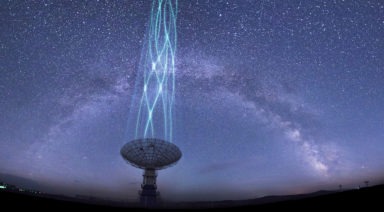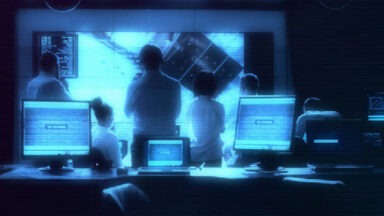5 Answers to the Fermi Paradox: Why Haven’t We Made Contact Yet?
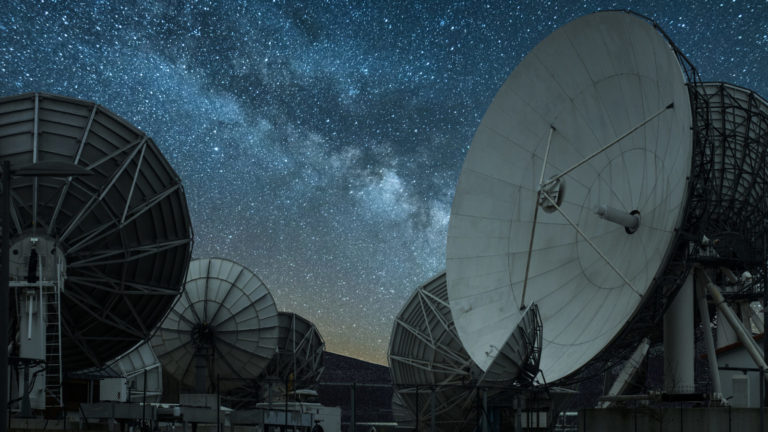
The question posed almost 70 years ago by physicist, Enrico Fermi, arguably remains to this day, “Where is everybody?” There exists no widely agreed upon solution to the Fermi Paradox: If there is sufficient probability other life exists in the galaxy, why haven’t we found it? Astrophysicists and theorists have continued to debate this question with new discoveries constantly adding to the conversation. Here are some of their ideas.
Fermi Paradox Solutions
Enrico Fermi was a brilliant physicist, known for achieving the first controlled nuclear reaction. At the time, he was working at the Los Alamos National Laboratory for the Department of Energy, when one day he and several colleagues began discussing recent stories regarding the UFO phenomenon.
The conversation came to an end, with his colleagues assuming they had moved on from the topic, but later at lunch Fermi shouted in exasperation, “Where is everybody?” They found it amusing, but the question persisted, eventually being fleshed out with a formula that calculated the number of stars, solar systems, and planets in the galaxy and the supposed likelihood of life. It became known as the Fermi Paradox.
Since that day, Fermi’s epiphanic moment has given birth to a number of potential solutions based on three premises: Any extraterrestrial life does not exist; extraterrestrial life exists, but has not yet contacted us; or extraterrestrial life is present, but we are unaware.
The Rare Earth Hypothesis
The circumstances that led to our existence here on Earth today are pretty phenomenal, almost too much so. A laundry list of seemingly improbable events and circumstances allowed life to develop on Earth, one of which is our anomalous moon.
Our abnormally large moon is in near perfect orbit. Most planets our size don’t have moons this large and it is thought that without it, life on Earth wouldn’t exist. The tides, caused by the gravitational pull of the moon, play a key role in plate tectonics. Without plate tectonics, it’s theorized the continental crust would have covered the entire surface of Earth, preventing any oceanic crust. Without the moon, there might not be any oceans.
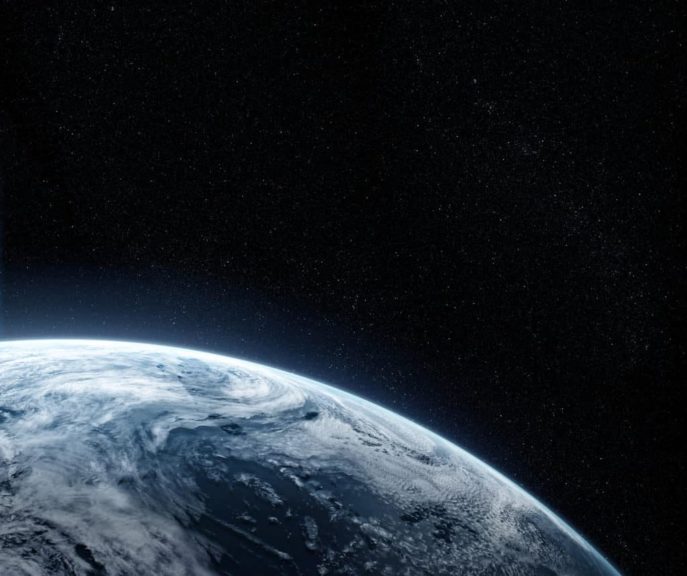
In our solar system, we’re at a perfect distance from the sun, with large gas giants like Jupiter and Saturn acting as “cosmic vacuum cleaners” on the outer rim. These planets capture the larger asteroids that would otherwise devastate the evolution of life as we know it.
Within the galaxy, our location on the outer edge of a spiral arm also prevents large asteroids, orbiting closer to the galactic center, from coming our way. Also, the inner orbits of the galaxy are mostly dead zones, where high levels of cosmic radiation emit from a massive black hole and a number of incredibly dense neutron stars. Is this the Fermi Paradox solution? We were improbably lucky?
The argument against this theory, proposed by Carl Sagan and Frank Drake, is that we’re pretty mediocre. Our rocky planet is pretty common, as is our solar system, while the region of the galaxy we’re in is non-exceptional, and our galaxy is a type that makes up 77 percent of galaxies in the universe. Therefore, there is a high probability of intelligent extraterrestrial life out there. In fact, there are probably about 200 million planets situated like we are.
The Great Filter
From here out, most Fermi Paradox solutions are based on the Kardashev Scale, a theory about how civilizations might develop to colonize beyond ours. The Great Filter is an attempt to imagine whether there is something preventing us from moving on to the next point of the Kardashev Scale, a Type II civilization that can harness all the energy of its sun.
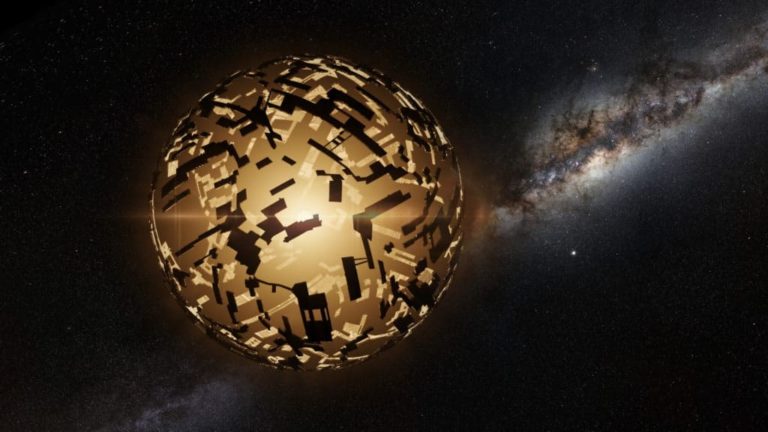
The Great Filter is a concept, proposed by economist Robin Hanson, which attempts to describe an ambiguity that prevents life from developing past a certain point. It basically states there is something that prevents dead matter from developing and giving rise to life, beyond a certain point. Hanson developed a nine-step list, which may or may not be complete, describing the concept of evolution for intelligent life:
- Life starts with the right star system, followed by:
- Reproductive molecules (DNA, RNA)
- Simple single-cell life
- Complex single-cell life
- Sexual reproduction
- Multi-cell life
- Tool-using animals with big brains
- Our civilization as we know it
- Colonization beyond our level
The Great Filter posits at some point along this scale – most likely the next level beyond where we are now – something will kill us off. Basically, it’s improbable we will colonize beyond Earth or our solar system. Therefore, any other intelligent life forms would be subject to the same principle, and we’ll never meet them. Might there be a chance we made it past the filter? Were other civilizations not as lucky?
Deadly Probes Scenario, a.k.a. The Berserker Scenario
Anders Sandberg, Stuart Armstrong, and Milan Ćirković made a few hypotheses based on Fermi’s Paradox. The Deadly Probes Scenario is one of their most dystopian theories.
In this scenario, the three hypothesize an incredibly advanced, extraterrestrial intelligence created probes to monitor the galaxy or universe for other civilizations or signs of evolving life. These probes are self-replicating, also known as Von Neumann probes, so they can reproduce and autonomously patrol space to prevent another civilization from rising up and destroying them. There would be four conditions these probes might have to meet to possibly exist:
- They would have to be the cause of the great silence – the reason we haven’t heard anyone.
- They’d have to be compatible with our existence.
- They would be silent in their activities so as not to be visible.
- They would be impossible to overthrow by a new civilization.
There would also be two levels of stability with these probes. Type I stability would be a dominant species of probe that prevents other species from emerging, or Type II, which a coexistence of two or more probe species equally competed with each other for rule over the galaxy.
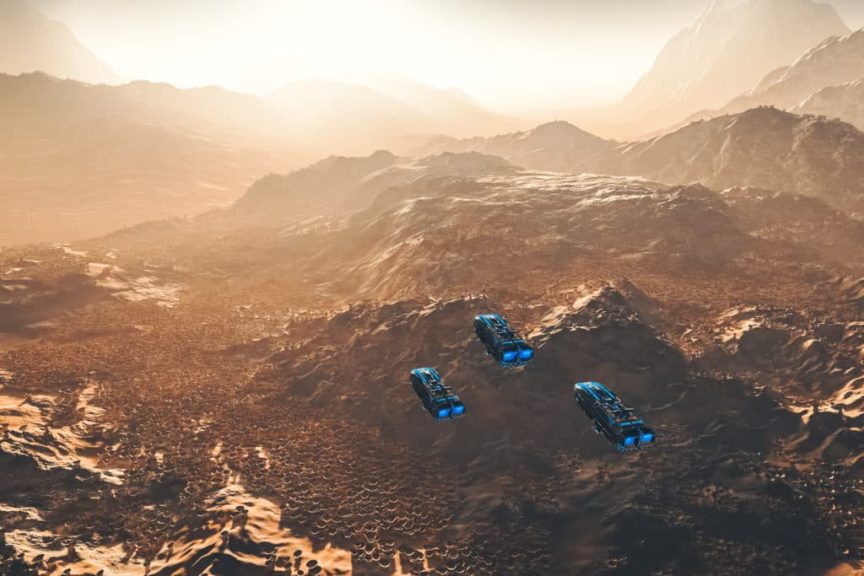
The authors of this scenario don’t think this is a plausible Fermi Paradox solution, at least within our galaxy. Because if it were, those berserker probes would be incredibly inefficient in not destroying us yet.
A Benevolent or Super Advanced Extraterrestrial Intelligence
Another belief, which is a bit more utopian, is we are still in the nascent phase of what we have the potential to become; a highly advanced race capable of things we can only dream of in sci-fi movies. This could theoretically mean an advanced extraterrestrial intelligence has reached this phase and observed us, but is waiting to reveal itself.
Why wouldn’t this race make its presence known? Most likely because it does not want to disturb us in our evolutionary process. This has become known as the zoo hypothesis: Compared to their level of intelligence, they view us like we view apes.
This civilization might understand it is necessary to let nature play its course as, if we became aware of their existence, we might screw something up. Chances are, they’re beyond the petty problems we face today including war, resource scarcity, and primitive modes of transportation. If they were to get involved, we might freak out and destroy ourselves.
They also might be slowly feeding us technology and information waiting for the time when we’re ready for them to make their presence known.

The authors of the Deadly Probes theory also proposed the aestivation hypothesis. Maybe these highly advanced civilizations are hibernating. The hypothesis states these types of civilizations may have uploaded their consciousness onto computers — a theory posited by Nick Bostrom — which would potentially allow for life to last long after the physical body deteriorates.
In this case, these conscious computer entities would want to wait for the universe to cool down to maximize energy efficiency. According to this theory the thermodynamics of computation makes the cost of a certain amount of computation proportional to temperature. Therefore, the colder the universe gets, the less it costs them to expend energy.
According to their hypothesis, these civilizations have seen it all in the universe’s current iteration. There’s no new information for them to obtain. Kind of depressing, right? So, they’re powering down into sleep mode and waiting until things cool down and maybe get more interesting.
The Holographic Universe
This theory gained a lot of traction lately, even though it was first widely proposed in the premise of The Matrix — nearly 20 years ago. Since Nick Bostrom, Elon Musk, and a slew of NASA scientists expressed their belief in this theory, it has become more popular. Maybe we haven’t made contact with extraterrestrial intelligence because we’re living in a computer simulation.
In this case, a number of theories have branched off from the broader concept. One idea is that an advanced extraterrestrial intelligence created a computer program to run a hyper-realistic simulation for whatever reason. If we had the computing power to achieve this, we probably would too. In that case, how deep does the rabbit hole go? Are they living in a computer simulation, too?
This theory seems to parallel the idea of a multiverse or the idea of infinite parallel dimensions. The difference is only a matter of semantics. Then again, the difference between us living in a computer simulation created by an advanced extraterrestrial race and us living in a world created by a god, is also a matter of semantics. Mind blown? Ours too.
So, what is the true solution to the Fermi Paradox? Will we ever find out? Only time will tell.
Nordic Aliens: What We Know About These Extraterrestrials
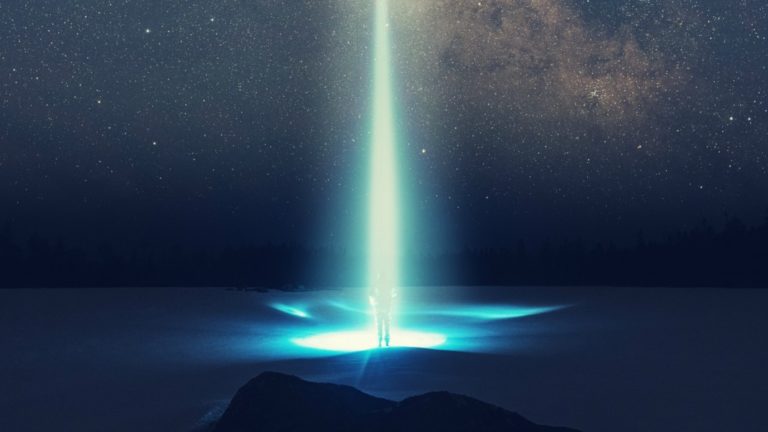
Ancient civilizations around the world have spoken of angelic beings that descended from the sky, sent by God to assist humanity by sharing their spiritual and emotional wisdom with Earthlings. These mythological entities appear to continue their mission to this day, and many believe they are emissaries from outer space, an extraterrestrial species known as the Nordic or Pleiadian race.
What Are Nordic Aliens?
The Nordics are an ancient alien species that have been reported in contact with various civilizations throughout history. Many accounts suggest that they may have been interacting with early human societies, perhaps influencing ancient cultures under the guise of gods or advanced beings. Descriptions often portray them as tall, fair-skinned beings with blond hair and blue or green eyes – similar to the physical characteristics of the historical Nordic race – radiating wisdom and serenity.
Initially, Nordic Aliens identified themselves as being from Venus and later from the Pleiades star cluster, particularly the planet Erra. However, their true origin remains a subject of debate, and they may prefer to keep their true home a secret for security reasons. Many regard the Nordics as benevolent guides, part of a greater Galactic Federation working to support humanity’s awakening and evolution.
Mythology and History
Nordic aliens, also known as Tall Whites, Pleiadians, Venusians, and Space Brothers, are often regarded as angelic beings who have appeared in humanity’s stories since ancient times. Many believe these luminous visitors were revered as gods, teachers, or messengers of light, guiding early civilizations and shaping spiritual traditions around the world.
Their influence is said to echo through ancient myths, sacred texts, and folklore that describe radiant beings descending from the heavens to share wisdom and technology with humankind, such as the following:
- Some researchers suggest these extraterrestrial beings may have visited ancient Mesopotamia, influencing Sumerian culture with their advanced knowledge.
- Ancient Egypt’s advanced astronomical and engineering skills, along with depictions of tall, fair-skinned beings, hint at possible Nordic alien influence.
- Ancient Greek mythology’s descriptions of gods and demigods resemble the physical traits attributed to these beings, further suggesting early encounters.
- Viking folklore and Norse mythology describe gods with characteristics akin to those of Nordic aliens, suggesting visits to ancient Scandinavia.
- Indigenous cultures in the Americas, such as the Hopi tribe, have prophecies of “True White Brothers,” while Mesoamerican legends speak of white-skinned gods.
- Ancient Indian texts describe fair-skinned deities and advanced flying machines, potentially linked to Nordic aliens.
Across modern accounts and popular culture, Nordic aliens continue to be seen as benevolent forces connected to spiritual awakening and the evolution of human consciousness.
Common Nordic Aliens
Nordic aliens are often described in various ways based on their appearances and the traits attributed to them.
Here are some commonly mentioned types:
Hopi
The Hopi people, an indigenous group in North America, have legends about various star beings or ancestors. Some interpretations suggest that these beings were tall and fair-skinned, similar to the Nordic archetype. These peaceful entities are believed to be the True White Brothers, foretold in Hopi prophecy, signaling the end of the fourth age.
Vril Society
The Vril Society is a controversial and often debated topic in ufology and occult circles. This secret society, reportedly active in the early 20th century in Germany, was said to be interested in advanced technology and hidden knowledge. While generally seen as a benevolent species, there’s a chance the Nordics influenced the Vril Society. Some factions might have deviated from the path of light, aligning with malevolent entities opposing the human race.
Agarthans
Agartha is a mythical realm said to exist within the Earth’s hollow interior. In this context, Agarthan Nordics are described as residing in this hidden world and possessing advanced technology and knowledge. They are often portrayed as having tall stature and fair features.
Pleiadians
Pleiadian Nordics are among the most well-known in contemporary UFO and New Age literature. They are said to come from the Pleiades star cluster, which is a group of stars located about 400 light-years from Earth.
Descriptions of Pleiadian Nordics typically include tall, attractive humanoid aliens with blonde hair and blue eyes who are benevolent and advanced. They are often described as being involved in guiding humanity, offering spiritual guidance, or even intervening in global issues to help prevent disasters or promote peace.
Venusians
Venusian Nordics are claimed to come from Venus, one of Earth’s neighboring planets. This type of Nordic is often depicted similarly to other Nordics but with some slight differences in their physical appearance or technology, reflecting their planetary origin. Reports of Venusian Nordics often focus on their advanced knowledge and technology, as well as their interest in interacting with or guiding humanity when visiting Earth.
Each of these types reflects the varied ways in which different cultures and speculative traditions interpret the concept of Nordic aliens.
Characteristics of Nordic Aliens
Nordic alien descriptions can differ, but the following points provide a consistent overview of their characteristics.
Physical Appearance
Nordics are perhaps the most human-like in appearance of all the different types of aliens and closely resemble people of Scandinavian or Aryan descent. They tend to have reddish to blond hair and green or blue eyes, and stand anywhere from 5 to 7 feet tall. Some claim that Nordics lack irises and wear contact lenses to blend in when visiting our planet. Many also claim that these beings lack a sense of smell. Nordics are also claimed to be fourth- and fifth-density beings.
These descriptions are commonly associated with flying saucers, UFO sightings, and abduction phenomena within European nations such as Denmark, Germany, Iceland, Norway, and Sweden.
They can easily pass as Earthlings, and those who have been in contact with this alien race state that their appearance allows them to freely explore our planet.
Modes of Transportation
Nordics are generally observers, sometimes viewing events and contactees from within their spacecraft, which range from spherical to cigar-shaped.
Their spaceships are often described as radiant and silent, capable of moving through the sky with no visible propulsion or sound. Witnesses report that these craft can appear and disappear suddenly, as though shifting between dimensions rather than traveling through ordinary space. Some contactees claim that the ships are powered by light or thought itself, allowing them to move instantly across vast distances.
Reports suggest that Nordic technology is both advanced and harmonious, blending energy, matter, and consciousness. The interiors of their vessels are often said to glow softly, with no visible controls, as if the ships respond directly to the intentions of their occupants.
Communication Methods
As part of the Galactic Federation, Nordics generally maintain a distance from humanity, often communicating telepathically or through dreams. However, some Nordics have been known to actively intervene in human affairs, influencing events and guiding individuals in more direct ways.
Those who claim contact describe the experience as deeply emotional and clear, with thoughts and feelings exchanged instantly. Telepathic messages from Nordics are said to carry both information and a strong sense of calm or compassion, as though the communication occurs on multiple levels of consciousness.
In addition to direct telepathy, the Nordics are said to reach out through dreams, symbols, and intuitive insight. Many experiencers report sudden moments of inspiration or understanding that feel as if knowledge has been “remembered” rather than taught. When these star people do communicate verbally, their speech is often described as melodic and resonant, leaving listeners with a sense of peace and expanded awareness.
What Are Nordic Aliens’ Intentions on Earth?
Many contactees have reported receiving channeled messages of peace and love from Nordics, with much of the available information about these beings coming through such communications. Nordics are benevolent beings who are deeply concerned with the spiritual evolution of humanity, and often emphasize that while humans are at a less advanced stage of development, we are closely related to them.
This concern has led some Nordics to more directly influence human affairs, guiding and assisting us as we progress.
Notable Abductees
Nordics are less frequently associated with alien abduction experiences, and when involved in such episodes, there is generally a message of peace and concern relating to the Earth’s well-being.
Travis Walton
One of the most notable and intriguing cases of Nordic abduction that occurred in North America was the Travis Walton case.
Walton was working as a logger in Arizona when he came across a hovering alien craft with his lumber crew and was knocked unconscious by a beam of light emanating from the object.
He was taken aboard, where he encountered several types of beings, including a Nordic-like race of tall, white humanoids. The craft released him after five days, and the subsequent story became a news sensation. Walton shared his experiences in his book The Walton Experience, which became the basis for the 1993 film Fire in the Sky.
Billy Meier
Another notable contactee includes Billy Meier, a Swedish farmer who claims to have been in contact with the Plejarans, a Nordic extraterrestrial race. Throughout his life, he has photographed, filmed, and been in contact with these beings, delivering their messages of peace and love to humanity.
George Adamski
George Adamski was another early Nordic contactee of the 1950s and claimed to be in contact with a group of Nordic aliens from Venus. He wrote several books on the subject and said that his materials were cleared by the FBI and the United States government.
President Eisenhower
It is also rumored that President Eisenhower had a secret meeting with a group of Nordic extraterrestrials who were attempting to convince the United States to disarm its nuclear missile program in exchange for advanced technology. The event is said to have taken place in February 1954 at Edwards Air Force Base under the guise of Eisenhower undergoing emergency dental surgery. It is believed that this meeting did not end with any sort of agreement.
Instead, Eisenhower is thought to have entered into a treaty with the Grey aliens, a pact ensuring that the United States could keep its nuclear arsenal while still receiving advanced technologies from the ETs. In exchange for this technological intel, the Greys would be allowed to abduct and experiment upon the American people without question.
Harmony and Stewardship
The message that seems to follow each encounter with the Nordic species is the importance of spiritual awareness and the stewardship of our planet. According to the Nordics, humans are a closely related species, and the human ascension process involves learning how to overcome our differences to live as one in harmony. Do you think humanity is close to realizing our collective ascension, or do you feel that extraterrestrial intervention is a necessary step in our evolution? Or is this all an intriguing hoax? You decide.
Learn more about extraterrestrials by exploring Gaia’s collection of alien documentaries and docuseries.





